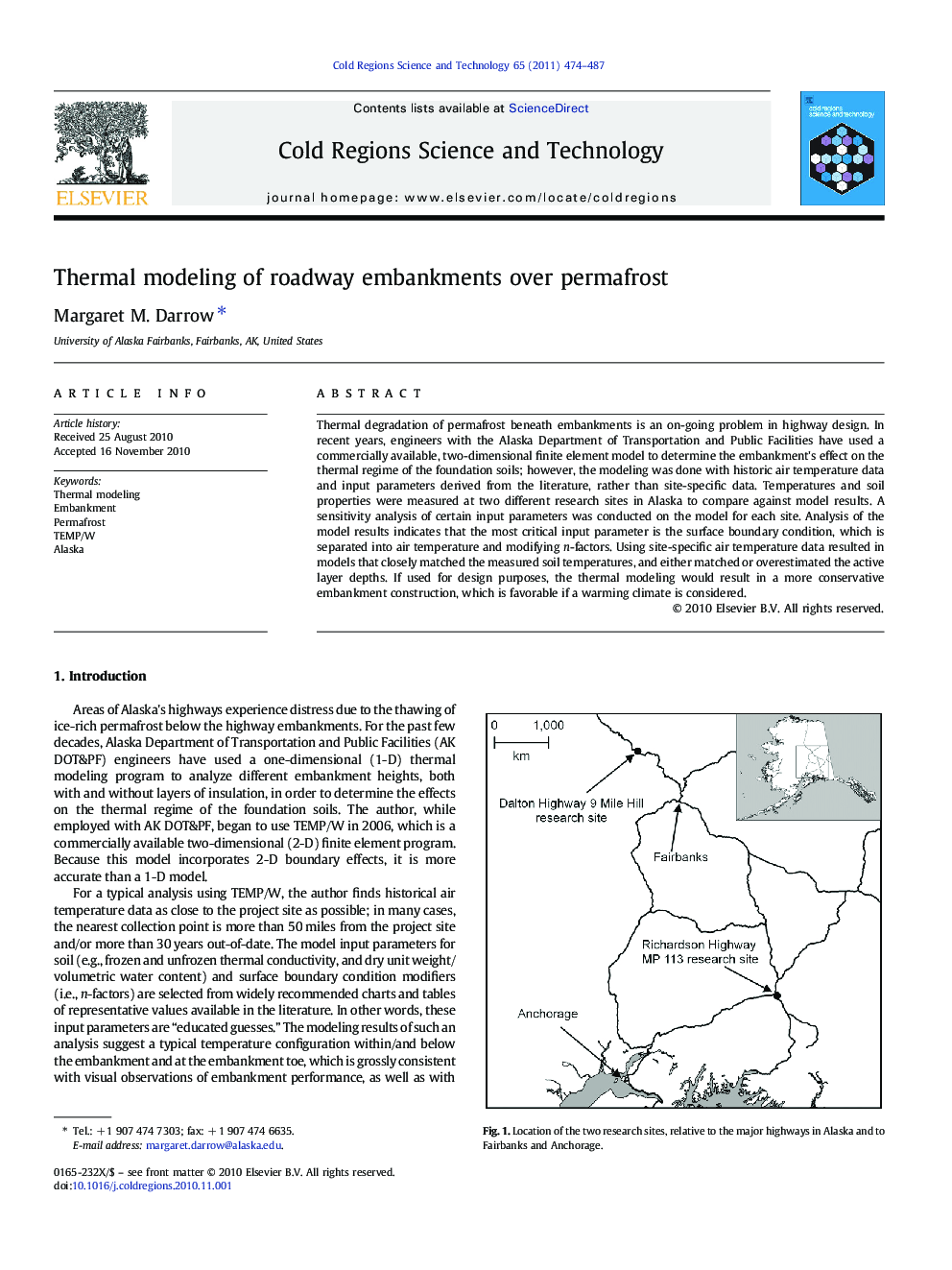| Article ID | Journal | Published Year | Pages | File Type |
|---|---|---|---|---|
| 4676282 | Cold Regions Science and Technology | 2011 | 14 Pages |
Thermal degradation of permafrost beneath embankments is an on-going problem in highway design. In recent years, engineers with the Alaska Department of Transportation and Public Facilities have used a commercially available, two-dimensional finite element model to determine the embankment's effect on the thermal regime of the foundation soils; however, the modeling was done with historic air temperature data and input parameters derived from the literature, rather than site-specific data. Temperatures and soil properties were measured at two different research sites in Alaska to compare against model results. A sensitivity analysis of certain input parameters was conducted on the model for each site. Analysis of the model results indicates that the most critical input parameter is the surface boundary condition, which is separated into air temperature and modifying n-factors. Using site-specific air temperature data resulted in models that closely matched the measured soil temperatures, and either matched or overestimated the active layer depths. If used for design purposes, the thermal modeling would result in a more conservative embankment construction, which is favorable if a warming climate is considered.
